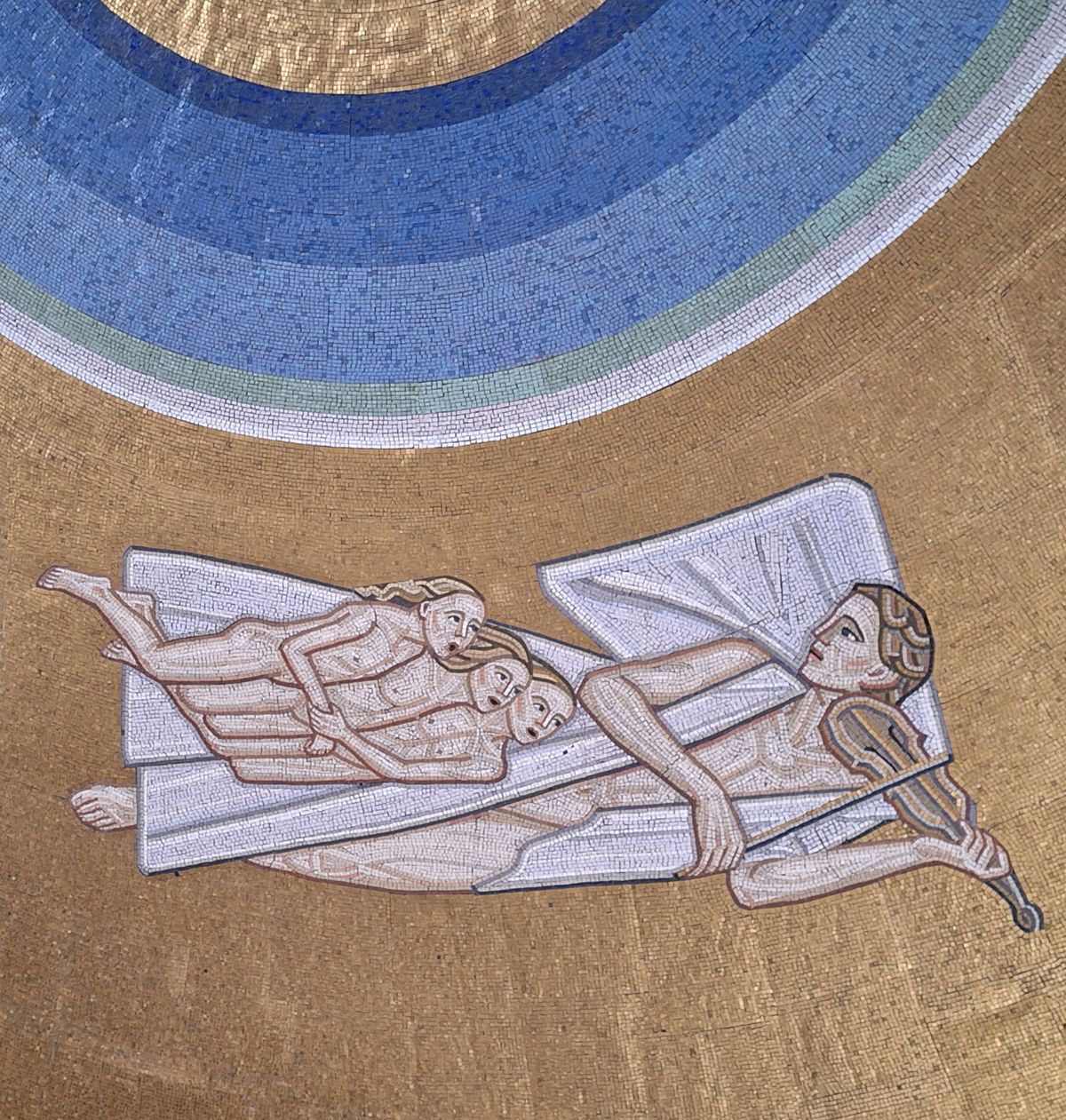About
During the first half of the 20th century, public mosaic works were common across Europe, often combining Symbolist themes with depictions of allegorical figures, historical events, and national heroes.
One outstanding example is found in the arched street passage beneath the tower of the Stærekassen theater in central Copenhagen. Crafted from 3 million glass mosaic tiles sourced from Venetian factories, this expansive mosaic, one of the largest in Scandinavia, was created by Danish artist Ejnar Nielsen and his team over several years in the 1930s.
The gilded ceiling mosaic showcases four imposing figures, each 13 feet tall (around four meters), arranged in a perpendicular cross: storybook author Hans Christian Andersen with a princess and playful children; composer Carl Nielsen playing his flute; poet Adam Oehlenschläger with golden horns; and author Johannes V. Jensen holding a globe. Together, these distinguished Danes symbolize myth, fairy tales, imagination, and music.
The artwork also features renowned Danish scientists, including Nobel physicist Niels Bohr and astronomer Ole Rømer, among others. Alongside them, workers are depicted listening to the radio, reflecting the building’s past as the home of the Danish Radio Symphony Orchestra.
As homage to the theater's name, Stærekassen, which means "the starling nest box" in English, referring to the building's box-shaped stage tower and a once-prominent circular window on the facade, a small mosaic of a starling perched on a birdhouse is cleverly hidden in plain sight within one of the alcoves.
Related Tags
Know Before You Go
The mosaic, accessible 24/7, is situated in the August Bournonvilles Passage underneath the arches of the Stærekassen tower, adjacent to the Royal Danish Theater, in the heart of Copenhagen. The closest metro station is Kongens Nytorv, and parking garages, such as the one at the Magasin du Nord department store, are located just a couple of blocks away.
Published
May 9, 2024




















































